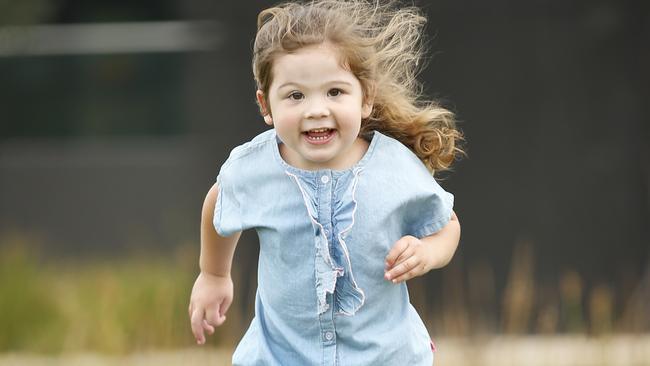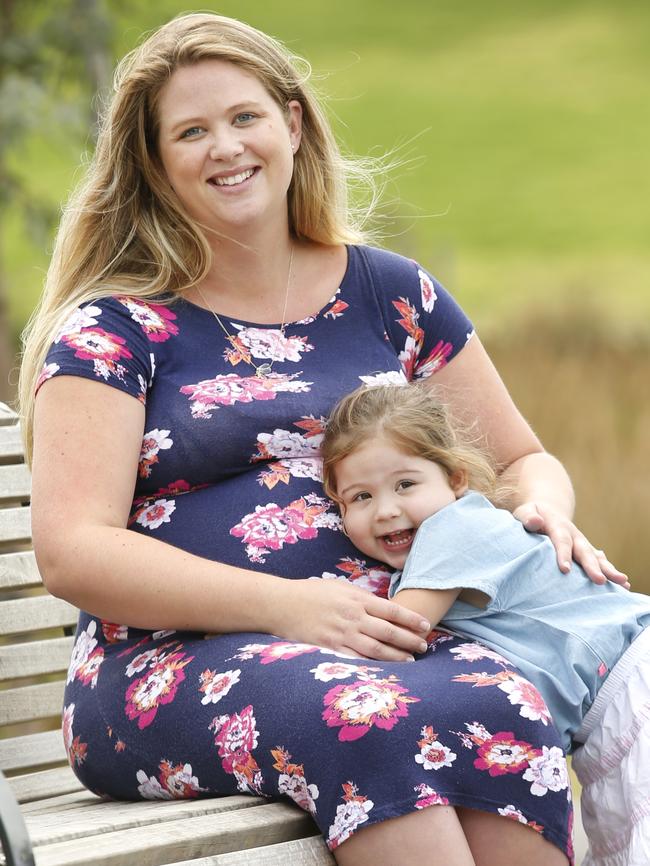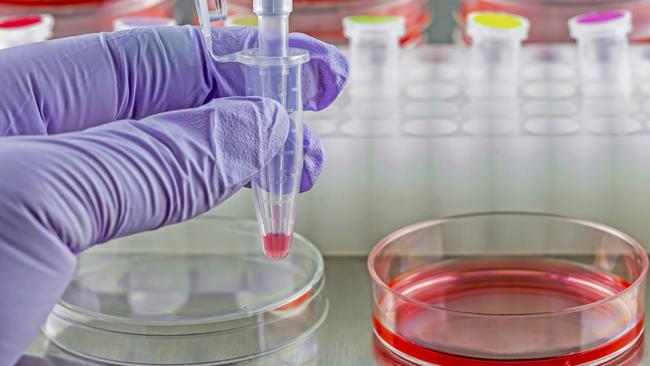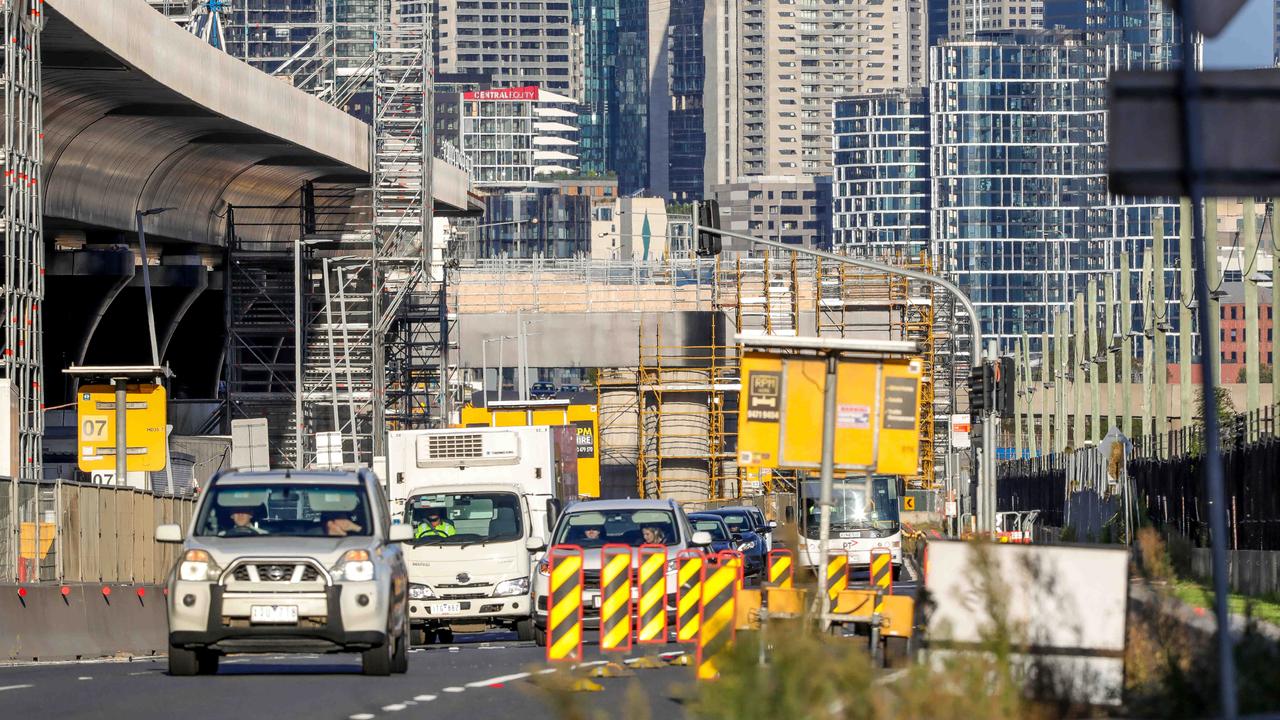Are stem cells the medical cure-all of the future?
THEY are the microscopic balls of life, billed as the wonder cell for curing disease, regrowing whole organs and turning the tap of the mythical fountain of youth.

News
Don't miss out on the headlines from News . Followed categories will be added to My News.
Cerebral palsy hope: Melbourne stem cell newborn brain injury trial plan
THEY are the microscopic balls of life, billed as the wonder cell for curing disease, regrowing whole organs and turning the tap on the mythical fountain of youth.
But are stem cells the medical cure-all of the future, or a snake-oil that is luring desperate Australians into unproven treatments that are hurting their wallets and potentially also their health?
Had a heart attack? A patch of “beating heart tissue” will be made from your own skin cells to repair this damage. (Yes, Melbourne researchers are making headway on this).
Need a new liver because yours is so damaged from cirrhosis? A jab of stem cell will be used to boost your liver to repair itself. (Again, another trial Melbourne researchers are preparing to start in humans).
Your second child has cerebral palsy, and you banked the cord blood of your first child? How lucky; your youngest can receive it as an infusion. (Victorian children are already part of this Australian-first trial to use a sibling’s cord blood in the hope of improving mobility and cognitive function in cerebral palsy.)
That is the hope.

Researchers now can source stem cells not just from human embryos, but from bone marrow, umbilical cord, tissues, and most recently, even reprogramming ordinary adult cells to morph into every and any cell type in the body, called induced pluripotent stem cells.
But a conference hosted this week by The Ritchie Centre — a foetal, infant and womens’ health research arm of the Hudson Institute of Medical Research, Monash University and Monash Health — aimed to celebrate the science and progress made into stem cell research, but temper the hype.
There is robust scientific evidence showing stem cells found in bone marrow and umbilical cord blood work to treat certain blood cancers and auto-immune diseases.
There is “emerging” evidence it may work to repair corneas to prevent the most common causes of blindness. It is looking promising in cerebral palsy, to treat lung damage in premature babies and osteoarthritis among many others.
But for all the other ailments, from anti-ageing to autism, spinal cord injury to Alzheimer’s disease, the consensus from Australia’s leading experts is; “there is not a shred of evidence it works”.
As head of the Gene and Stem Cell Therapy Program at the Centenary Institute at the University of Sydney, Professor John Rasko has spent 30 years devoted to marrying stem cells with gene therapies to find better treatment for cancers and genetic disorders.
But he said he had increasingly found more of his time taken up speaking out against “shonky” operators allowed to operate because of ambiguity in Australian law.
A loophole in the Therapeutic Goods Administration Act, called the “excluded goods order”, allows a person’s own stem cells to be used, even if the treatment hasn’t been scientifically proven as safe or effective.
Prof Rasko’s latest study found Australia had the highest number of stem cell clinics marketing their therapies directly to the public per capita.

“You only need to go down to your local shopping centre, or open an in-flight magazine, and you can find clinics preying on people’s hope for a better outcome,” Prof Rasko said. “Almost all of them without a shred of evidence they actually work.”
Prof Rasko said the loophole had still not been closed by the TGA since it asked for public comment on the issue 18 months ago.
In the meantime, the NSW coroner last month handed down a scathing finding into the death of 75-year-old Sheila Drysdale after she received stem cells from her own fat to treat dementia.
“For many years the public has been hearing about Nobel prize-winning discoveries in relation to stem cells, and positive health messages about the almost magical properties that they have to manufacture and rejuvenate tissue,” Prof Rasko said.
“They do. But it’s these positive messages that shonky operators are co-opting to provide false hope when they don’t have any evidence that all of these marvellous stem cell properties might one day offer, are here and now.”
But in some cases the promises are starting to be delivered.

Professor Jerry Chan, from the National University of Singapore and KK Women’s and Children’s Hospital, detailed to the Melbourne audience this week how he was treated five children while still in the womb with mesenchymal stem cells to treat brittle bone disease.
The oldest child is now aged five.
“They’re doing well. They’re relatively pain free and having better-than-expected clinical progress,” Prof Chan said. “We’re quite convinced it works.”
Professor Euan Wallace, co-head of the Ritchie Centre and Director of Obstetrics and Gynaecology Services at Monash Health, is involved in a trial giving stem cells taken from the placenta after birth to premature babies with lung damage, as well as preparing to start giving these placental cells to children with cerebral palsy.
Prof Wallace said while clinical trials governed by hospital ethics boards slowed accessibility, this process was vital to ensuring treatments were safe and better than a placebo.
“Cell therapy trials are being done in big institutions, out research hospitals and university hospitals are all regulated by clinical ethics committees. People can have confidence they are well run and have the appropriate safety measures in place,” Prof Wallace said.
“There are some rather unscrupulous outfits. The major risk is people are just wasting their money, but the other risk if that may come to their health,” Prof Wallace said.
“We’ve got great suspicions that what these clinics say they’re in injecting, they not injecting at all.”
MORE: CEREBRAL PALSY HOPE: MELBOURNE STEM CELL NEWBORN BRAIN INJURY TRIAL PLAN


